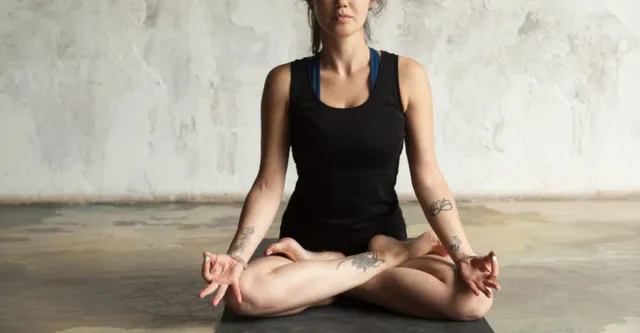
PADMASANA, the lotus pose
This posture where the legs are crossed with the feet on the thighs would look like a lotus flower. Considered by many to be an archetype of the yoga posture as it originated from meditative practices in ancient India, this asana encourages breathing, promotes physical stability, connects mind, body and spirit, one of the ultimate goals of yoga.
The practice of yoga exercises in opening up to the inner world. Hatha yoga places the key to supreme happiness in the “mud of life”. The symbol of yoga is the splendid lotus flower, which takes root in the mud, a muddy and stagnant deposit. To bloom and blossom into a beautiful flower, the lotus emerges from this muddy ground, as the image of the person who exercises yoga wants it, at the beginning it is rooted in the mud, being part of the earthly world and at the As she progresses she opens up spiritually after getting to know her hidden parts and dark areas of the mind in order to free herself from them.
The lotus flower grows in the swamp, but rises above it, so that it is not defiled by the swamp from which it comes. The lotus leaf does not absorb what falls on it; the water pearls and slides, leaving the leaf intact. The image is that the mind is not disturbed by anything that comes in contact with it, no matter our background or the circumstances in which we are born, we all have lotus potential.
The lotus is called the "disease destroyer" for its myriad of physical and energetic benefits of the pose. Because of the way the body is "locked" in place, various parts of it press acupuncture points in the stomach, gallbladder, spleen, kidneys, and liver.
This causes changes in metabolic structure and brain patterns, which help to create balance throughout the system. "When the yogi seated in the Lotus pose leaves the ground and remains firmly in the air, he must know that he has achieved mastery of this breath of life which destroys the darkness of the world," Shiva Samhita.
Padmasana stimulates the pelvis, abdomen and bladder areas, opens the hips, stretches the ankles and knees, and keeps the spine straight. The lotus pose increases awareness and attention, calms the brain, stimulates digestive function, and eases menstrual discomfort and sciatica.
Access the annotated class sequence with posture images and join the community of teachers!